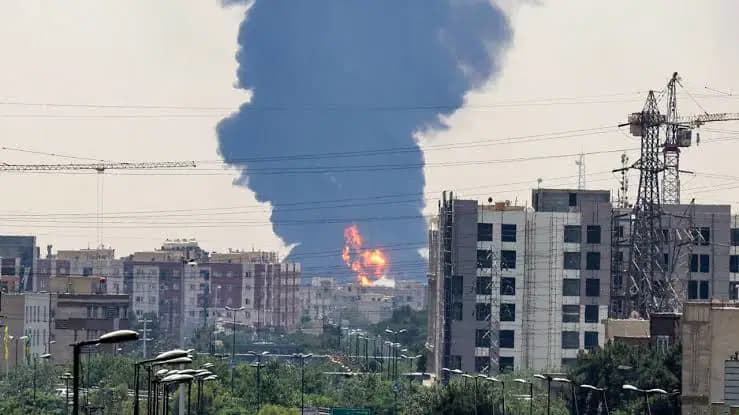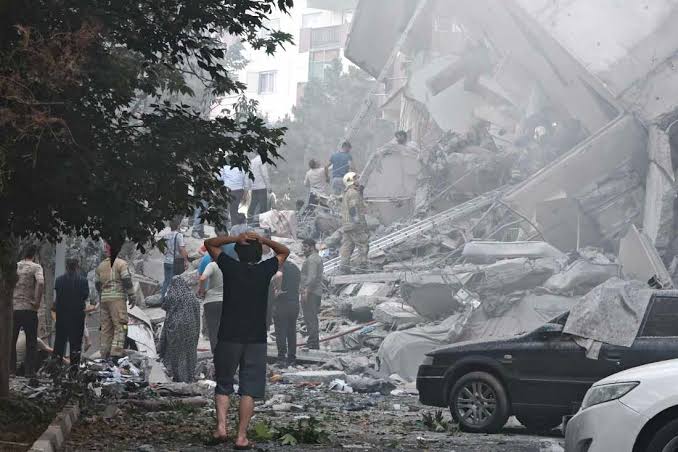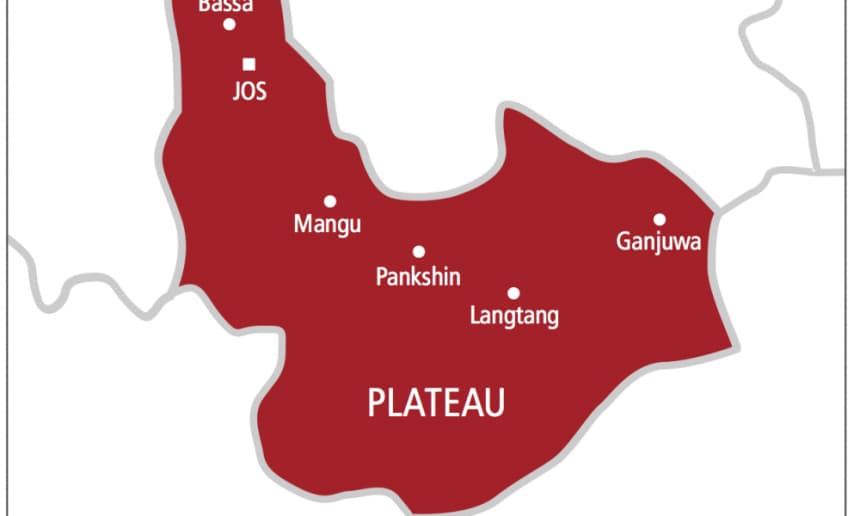On June 21, 2025, Israel intensified its military campaign against Iran, launching a series of airstrikes targeting critical military infrastructure, including missile production facilities, launch sites, and command centers across central and southwestern Iran. The Israeli Defense Forces (IDF) confirmed these precision strikes were aimed at disrupting Iran’s ability to produce and deploy ballistic missiles, which Israel claims pose an immediate threat to its national security. The operation, part of a broader conflict that erupted on June 13, 2025, follows intelligence reports suggesting Iran was advancing its nuclear and missile programs, prompting Israel to act preemptively to degrade these capabilities.
Iran responded with a barrage of ballistic missiles and drones targeting Israeli cities, including Tel Aviv, Haifa, and Be’er Sheva, resulting in significant damage to civilian infrastructure and casualties. According to Iranian state media, the retaliatory strikes, dubbed Operation True Promise 3, utilized long-range and ultra-heavy missiles aimed at Israeli military sites, defense industries, and command centers. Reports indicate that at least 24 people were killed in Israel by June 16, with over 200 injuries reported in Tel Aviv alone following strikes on June 20, while Iran claims over 400 deaths and 3,000 injuries on its soil since the conflict began.
The IDF’s latest wave of attacks included a strike on Iran’s Isfahan Nuclear Technology Center, a key facility in Iran’s nuclear program, which sustained significant damage to uranium conversion infrastructure and laboratories. Israeli military officials stated that these strikes, combined with earlier operations, have delayed Iran’s potential nuclear weapon development by at least two to three years. However, the International Atomic Energy Agency (IAEA) noted that while four buildings at the Isfahan site were damaged, there was no reported nuclear contamination, and Iranian authorities downplayed the extent of the destruction.
Among the high-profile targets, Israel confirmed the assassination of several senior Iranian military figures, including Aminpour Joudaki, commander of the second UAV brigade of the Islamic Revolutionary Guard Corps (IRGC) Air Force, killed in a strike in Ahvaz. Joudaki had assumed a key role following the elimination of Taher Pour, another IRGC commander, on June 13. Additionally, a strike in Qom killed Mohammed Said Izadi, a senior Quds Force official responsible for coordinating with Palestinian armed groups, further weakening Iran’s regional influence.
The conflict has drawn international attention, with the United States playing a complex role. President Donald Trump, while denying direct U.S. involvement in the strikes, acknowledged providing intelligence support and assisting in intercepting Iranian missiles. Trump has resisted calls to halt Israel’s campaign, stating on June 20 that it would be “very hard” to request a pause, though he indicated a two-week period to decide on potential U.S. military intervention, citing a “substantial chance” for renewed nuclear negotiations with Iran.
Iran’s Foreign Minister Abbas Araghchi, speaking in Istanbul on June 21, described the situation as “difficult” but emphasized the Iranian military’s resilience. Araghchi ruled out nuclear talks until Israel ceases its attacks, a stance echoed by a senior Iranian official who rejected demands to halt uranium enrichment. Meanwhile, European leaders, including French President Emmanuel Macron, condemned strikes on civilian infrastructure, urging both sides to return to diplomacy to avoid a broader regional conflict.
The conflict’s regional impact is significant, with countries like Qatar and Oman warning of catastrophic repercussions if economic and civilian infrastructure continues to be targeted. In Iran, strikes have disrupted fuel depots, airports, and public buildings, shaking public confidence and prompting a domestic crackdown on dissent. In Israel, air raid sirens and missile interceptions have become routine, with the Iron Dome system intercepting many incoming projectiles, though some have caused fires and structural damage in cities like Holon and Rehovot.
Israel’s Defense Minister Israel Katz has instructed the military to intensify attacks on “symbols of the regime” in Tehran, aiming to destabilize Iran’s leadership. The IDF has also targeted propaganda hubs, including Iran’s state-run television station, which was struck during a live broadcast on June 16, and the Ministry of Intelligence building in Tehran on June 15. These strikes aim to weaken Iran’s ability to coordinate military operations and maintain domestic support.
The human toll is mounting on both sides. In Iran, the deaths of civilians, including an obstetrician, a pediatrician, and her child, have fueled public outrage, with protests in Tehran following Friday prayers on June 20. In Israel, the deaths of civilians, including a family in Tamra killed by an Iranian missile on June 17, have intensified calls for a decisive response. The conflict has also displaced thousands, with countries like India launching evacuation operations, such as Operation Sindhu, to repatriate citizens from Iran.
Legal and diplomatic debates are intensifying. Some experts argue that Israel’s strikes violate international law under Article 2(4) of the UN Charter, which prohibits the use of force, potentially constituting an act of aggression. Others contend that Israel’s actions are a defensive response to ongoing threats from Iran and its proxies, including Hamas, Hezbollah, and the Houthi rebels, dating back to attacks in 2023. Iran’s UN ambassador criticized the IAEA for not condemning Israel’s strikes, further complicating diplomatic efforts.
As the conflict enters its second week, both sides show no signs of de-escalation. Israel’s military claims to have neutralized half of Iran’s missile launchers, while Iran continues to replenish its arsenal and vows a “decisive and proportional” response. The international community remains divided, with the U.S. repositioning warships and aircraft in the region, Russia offering mediation, and European nations pushing for a return to nuclear talks, all while the risk of a wider war looms large.




